-

Mar
20
Interpretive Summary: Genomic analysis of mobility measures on 5-month-old gilts associated with structural soundness
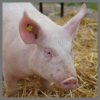
If methods existed to identify gilts that will become lame in breeding herds, then these gilts could be redirected as market animals indirectly improving sow well-being, longevity, and increasing profitability. This study evaluated gilts (age 5 mo) and then observed those retained for breeding throughout their productive life.
Read more
-

Mar
20
Interpretive Summary: Exploring the effects of dietary lysine and tryptophan on the social behavior of pigs
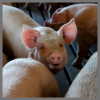
Negative social behaviors between pigs can cause stress, which can compromise welfare. There has been significant interest in exploring the effect of diet on negative social behaviors and the wider social behavior repertoire of pigs. The aim of this study was to determine the effects of dietary lysine and tryptophan levels, 2 amino acids found in pig feed, on the social behavior of commercially housed pigs.
Read more
-

Mar
20
Interpretive Summary: In vitro fermentation characteristics of dietary fibers using fecal inoculum from dogs consuming commercial or grain kefir

As a fermentable milk drink, kefir may affect gastrointestinal microbiota, but such products are poorly studied in companion animals. Our objective was to determine how commercial or traditional kefir feeding impacted the in vitro fermentation characteristics of fibers common in pet foods.
Read more
-

Mar
19
The Giving Herd - ASAS Foundation Newsletter - March 2025
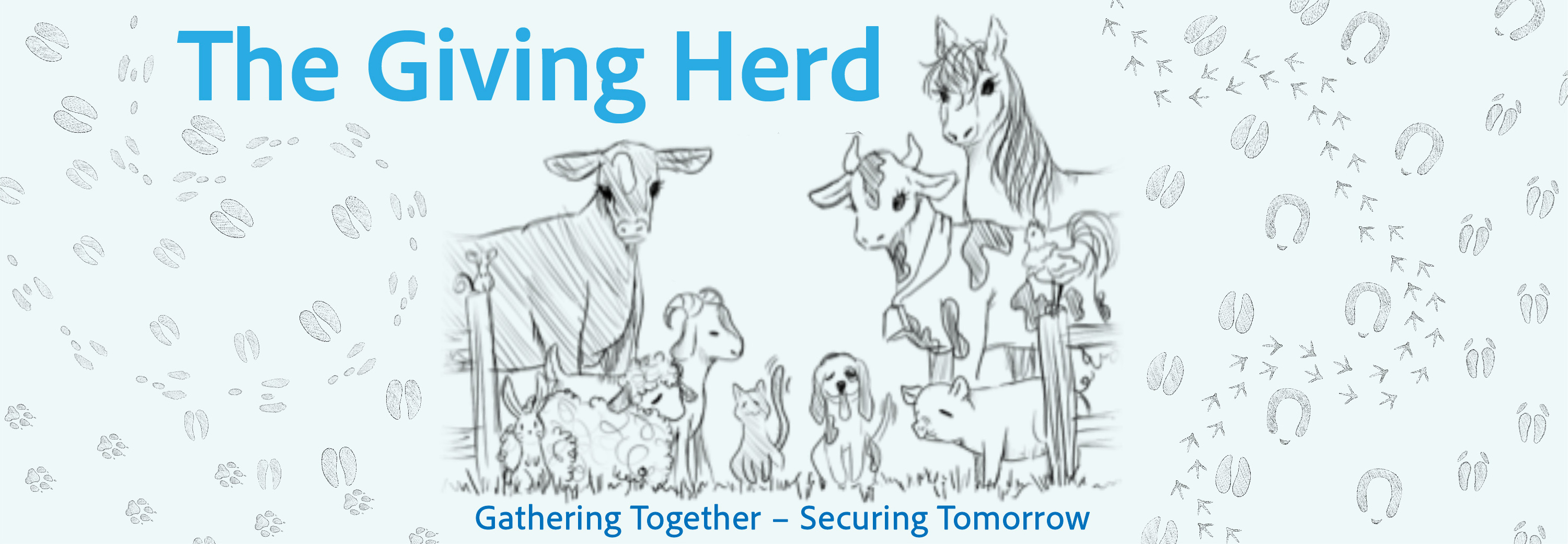
The March Edition of The Giving Herd, an ASAS Foundation Newsletter
Read more
-

Mar
06
PRESS RELEASE: Society-Owned Animal Science Journals Join Forces to Address Challenges in Scientific Publishing
A group of Editors-in-Chief from leading animal science journals has published a collective perspective on today’s rapidly shifting world of scholarly publishing. Titled “Values Shared by Journals of Learned Societies, Associations, and Scientific Institutions in Animal Science” this jointly authored editorial underscores how society-owned journals preserve scientific integrity, maintain rigorous peer review, and ensure responsible access to research findings—even in an increasingly author-driven environment.
Read more
-

Mar
06
Interpretive Summary: Breed and trace mineral source influence the performance of beef heifers during periods of nutrient restriction and grazing forage at early vegetative stage
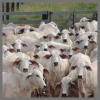
This study examined how breed and trace mineral sources affect growth and diarrhea incidence during periods of nutrient restriction and grazing. Breeds consisted of ½ Angus × ½ Nelore (ANE) and Nelore (NE) heifers, whereas mineral sources included sulfate (SUL) or hydroxychloride (HYD) sources of copper, manganese, and zinc offered to heifers from days 0 to 49.
Read more
-

Mar
06
Interpretive Summary: Influence of feeding thermally peroxidized lipids on the performance of growing pigs
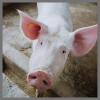
Feeding pigs diets with lipids that contain peroxides and aldehydes has been reported to reduce pig performance. Four experiments conducted in growing pigs fed diets containing variable levels of peroxides and aldehydes confirmed that lipid oxidation products have a detrimental effect on pig performance and show that the reduction in daily gain, feed intake, and feed efficiency can be accurately predicted by analyzing dietary concentrations of peroxides and aldehydes.
Read more
-

Mar
06
Interpretive Summary: Feeding nursery pigs diets containing peroxidized soybean oil has minimal effects on oxidative status but dramatically reduces serum vitamin E concentrations
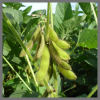
Swine are exposed to a variety of nutritional stressors that can affect their well-being and productivity. One stressor of concern is the consumption of lipids that have been damaged by excessive heating. The current study obtained blood from pigs consuming peroxidized soybean oil and subsequently evaluated for markers of oxidative stress, including plasma vitamin E.
Read more
-

Mar
06
Interpretive Summary: Lactobacillus and Saccharomyces fermentation products impact performance and the fecal microbiome in weanling pigs inoculated with enterotoxigenic Escherichia coli
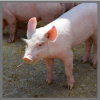
Enterotoxigenic Escherichia coli (ETEC) causes significant health problems in postweaned pigs causing economic loss. In the past, antimicrobials were key for controlling ETEC until the threat of antimicrobial resistance was globally realized.
Read more
-

Mar
06
Interpretive Summary: Polyamines protect porcine sperm from lipopolysaccharide-induced mitochondrial dysfunction and apoptosis via casein kinase 2 activation
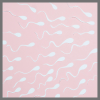
Bacterial contamination is unavoidable during the storage of boar semen. Antibiotics or chemicals in the semen extender do not clear lipopolysaccharide (LPS) released from the Gram-negative bacteria. LPS undermines sperm functionality and efficacy of semen preservation in vitro.
Read more
-

Feb
20
Interpretive Summary: Whole stillage inclusion level influences in vitro fiber digestibility and ruminal fermentation of tall fescue hay
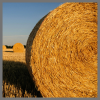
Whole stillage, a byproduct of ethanol production, is frequently available to beef producers as a potential low-cost feed supplement. The acidic pH of whole stillage is a concern for supplementing high-forage diets and its effects on ruminal fiber digestibility and fermentation are not well characterized.
Read more
-

Feb
20
Interpretive Summary: Metagenomic detection and genome assembly of novel PRRSV-2 strain using Oxford Nanopore Flongle flow cell
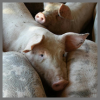
Porcine reproductive and respiratory syndrome virus (PRRSV) is responsible for a disease characterized by reproductive and respiratory complications in pigs. PRRSV exhibits substantial genetic diversity throughout the genome, so it is important to utilize whole-genome sequencing to accurately depict the full variation present.
Read more
-

Feb
20
Interpretive Summary: LncRNA MSTRG.14227.1 regulates the morphogenesis of secondary hair follicles in Inner Mongolia cashmere goats via targeting ADAMTS3 by sponging chi-miR-433
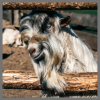
The cashmere goat is a type of livestock primarily known for its cashmere. Cashmere is a vital raw material in the textile industry, possessing significant economic value. The embryonic stage is the main stage of the formation of hair follicle structures, which directly influence both the yield and quality of cashmere.
Read more
-

Feb
20
Interpretive Summary: A meta-analysis of genome-wide association studies to identify candidate genes associated with feed efficiency traits in pigs
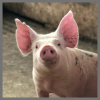
Pig farming is an activity of great relevance for the Brazilian economy and worldwide food security. Feed efficiency, which is defined as the ability of animals to convert feed into performance outputs (e.g., body weight in pigs), is directly related to the long-term sustainability of the pig industry due to its impact on production costs and the environmental footprints of the industry. Therefore, selective breeding for improved feed efficiency has been a primary goal in the pig industry.
Read more
-

Feb
20
Interpretive Summary: Influence of source of origin and region of finishing on growth performance and carcass characteristics of finishing heifers fed in the United States
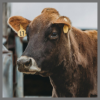
The objective of this research was to evaluate the growth performance and carcass traits of feedlot heifers sourced and finished in different geographical regions in the United States. Overall, heifers transported to higher ambient temperatures had decreased dry matter intake, final body weight (BW), and carcass quality, but had improved carcass cutability compared to non-transported heifers.
Read more
-

Feb
20
Interpretive Summary: Aging oocytes: exploring apoptosis and its impact on embryonic development in common carp (Cyprinus carpio)

The delay in fertilization after ovulation or retention of ovulated oocytes in the fish body causes postovulatory aging. Postovulatory aging leads to time-dependent deterioration of oocyte quality and loss of fertilization capacity. The mechanisms behind losing oocyte quality and developmental capacity due to postovulatory oocyte aging remain elusive.
Read more
-

Feb
19
The Giving Herd - ASAS Foundation Newsletter - February 2025

The February Edition of The Giving Herd, an ASAS Foundation Newsletter
Read more
-

Feb
14
Kristin Hales ASAS Journey

Kristin Hales ASAS Journey
Read more
-

Feb
13
Interpretive Summary: Alleviation of lipopolysaccharide-induced heart inflammation in poultry treated with carnosic acid via the NF-κB and MAPK pathways
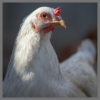
This study explores carnosic acid (CA) from rosemary as a natural feed additive in poultry farming to counter heart inflammation caused by environmental stressors and infections, which often harm growth or lead to sudden death. Researchers tested CA’s protective effects in broilers by treating them with various doses before inducing heart inflammation through lipopolysaccharide.
Read more
-

Feb
13
Interpretive Summary: Mogroside V protects lipopolysaccharides-induced lung inflammation chicken via suppressing inflammation mediated by the Th17 through the gut-lung axis
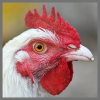
Frequent respiratory problems during broiler breeding not only affect the growth performance of broilers, but also jeopardize the health and safety production of broilers in serious cases. Luo Han Guo is a traditional medicinal and food plant, and its extract mogroside V (MGV) has biological functions such as blood glucose lowering, bacteriostatic, antioxidant, and antiinflammator.
Read more
 MarInterpretive Summary: Genomic analysis of mobility measures on 5-month-old gilts associated with structural soundness
MarInterpretive Summary: Genomic analysis of mobility measures on 5-month-old gilts associated with structural soundness If methods existed to identify gilts that will become lame in breeding herds, then these gilts could be redirected as market animals indirectly improving sow well-being, longevity, and increasing profitability. This study evaluated gilts (age 5 mo) and then observed those retained for breeding throughout their productive life.
If methods existed to identify gilts that will become lame in breeding herds, then these gilts could be redirected as market animals indirectly improving sow well-being, longevity, and increasing profitability. This study evaluated gilts (age 5 mo) and then observed those retained for breeding throughout their productive life. MarInterpretive Summary: Exploring the effects of dietary lysine and tryptophan on the social behavior of pigs
MarInterpretive Summary: Exploring the effects of dietary lysine and tryptophan on the social behavior of pigs Negative social behaviors between pigs can cause stress, which can compromise welfare. There has been significant interest in exploring the effect of diet on negative social behaviors and the wider social behavior repertoire of pigs. The aim of this study was to determine the effects of dietary lysine and tryptophan levels, 2 amino acids found in pig feed, on the social behavior of commercially housed pigs.
Negative social behaviors between pigs can cause stress, which can compromise welfare. There has been significant interest in exploring the effect of diet on negative social behaviors and the wider social behavior repertoire of pigs. The aim of this study was to determine the effects of dietary lysine and tryptophan levels, 2 amino acids found in pig feed, on the social behavior of commercially housed pigs. MarInterpretive Summary: In vitro fermentation characteristics of dietary fibers using fecal inoculum from dogs consuming commercial or grain kefir
MarInterpretive Summary: In vitro fermentation characteristics of dietary fibers using fecal inoculum from dogs consuming commercial or grain kefir As a fermentable milk drink, kefir may affect gastrointestinal microbiota, but such products are poorly studied in companion animals. Our objective was to determine how commercial or traditional kefir feeding impacted the in vitro fermentation characteristics of fibers common in pet foods.
As a fermentable milk drink, kefir may affect gastrointestinal microbiota, but such products are poorly studied in companion animals. Our objective was to determine how commercial or traditional kefir feeding impacted the in vitro fermentation characteristics of fibers common in pet foods. MarThe Giving Herd - ASAS Foundation Newsletter - March 2025
MarThe Giving Herd - ASAS Foundation Newsletter - March 2025 The March Edition of The Giving Herd, an ASAS Foundation Newsletter
The March Edition of The Giving Herd, an ASAS Foundation Newsletter MarPRESS RELEASE: Society-Owned Animal Science Journals Join Forces to Address Challenges in Scientific Publishing
MarPRESS RELEASE: Society-Owned Animal Science Journals Join Forces to Address Challenges in Scientific Publishing MarInterpretive Summary: Breed and trace mineral source influence the performance of beef heifers during periods of nutrient restriction and grazing forage at early vegetative stage
MarInterpretive Summary: Breed and trace mineral source influence the performance of beef heifers during periods of nutrient restriction and grazing forage at early vegetative stage This study examined how breed and trace mineral sources affect growth and diarrhea incidence during periods of nutrient restriction and grazing. Breeds consisted of ½ Angus × ½ Nelore (ANE) and Nelore (NE) heifers, whereas mineral sources included sulfate (SUL) or hydroxychloride (HYD) sources of copper, manganese, and zinc offered to heifers from days 0 to 49.
This study examined how breed and trace mineral sources affect growth and diarrhea incidence during periods of nutrient restriction and grazing. Breeds consisted of ½ Angus × ½ Nelore (ANE) and Nelore (NE) heifers, whereas mineral sources included sulfate (SUL) or hydroxychloride (HYD) sources of copper, manganese, and zinc offered to heifers from days 0 to 49. MarInterpretive Summary: Influence of feeding thermally peroxidized lipids on the performance of growing pigs
MarInterpretive Summary: Influence of feeding thermally peroxidized lipids on the performance of growing pigs Feeding pigs diets with lipids that contain peroxides and aldehydes has been reported to reduce pig performance. Four experiments conducted in growing pigs fed diets containing variable levels of peroxides and aldehydes confirmed that lipid oxidation products have a detrimental effect on pig performance and show that the reduction in daily gain, feed intake, and feed efficiency can be accurately predicted by analyzing dietary concentrations of peroxides and aldehydes.
Feeding pigs diets with lipids that contain peroxides and aldehydes has been reported to reduce pig performance. Four experiments conducted in growing pigs fed diets containing variable levels of peroxides and aldehydes confirmed that lipid oxidation products have a detrimental effect on pig performance and show that the reduction in daily gain, feed intake, and feed efficiency can be accurately predicted by analyzing dietary concentrations of peroxides and aldehydes. MarInterpretive Summary: Feeding nursery pigs diets containing peroxidized soybean oil has minimal effects on oxidative status but dramatically reduces serum vitamin E concentrations
MarInterpretive Summary: Feeding nursery pigs diets containing peroxidized soybean oil has minimal effects on oxidative status but dramatically reduces serum vitamin E concentrations Swine are exposed to a variety of nutritional stressors that can affect their well-being and productivity. One stressor of concern is the consumption of lipids that have been damaged by excessive heating. The current study obtained blood from pigs consuming peroxidized soybean oil and subsequently evaluated for markers of oxidative stress, including plasma vitamin E.
Swine are exposed to a variety of nutritional stressors that can affect their well-being and productivity. One stressor of concern is the consumption of lipids that have been damaged by excessive heating. The current study obtained blood from pigs consuming peroxidized soybean oil and subsequently evaluated for markers of oxidative stress, including plasma vitamin E. MarInterpretive Summary: Lactobacillus and Saccharomyces fermentation products impact performance and the fecal microbiome in weanling pigs inoculated with enterotoxigenic Escherichia coli
MarInterpretive Summary: Lactobacillus and Saccharomyces fermentation products impact performance and the fecal microbiome in weanling pigs inoculated with enterotoxigenic Escherichia coli Enterotoxigenic Escherichia coli (ETEC) causes significant health problems in postweaned pigs causing economic loss. In the past, antimicrobials were key for controlling ETEC until the threat of antimicrobial resistance was globally realized.
Enterotoxigenic Escherichia coli (ETEC) causes significant health problems in postweaned pigs causing economic loss. In the past, antimicrobials were key for controlling ETEC until the threat of antimicrobial resistance was globally realized. MarInterpretive Summary: Polyamines protect porcine sperm from lipopolysaccharide-induced mitochondrial dysfunction and apoptosis via casein kinase 2 activation
MarInterpretive Summary: Polyamines protect porcine sperm from lipopolysaccharide-induced mitochondrial dysfunction and apoptosis via casein kinase 2 activation Bacterial contamination is unavoidable during the storage of boar semen. Antibiotics or chemicals in the semen extender do not clear lipopolysaccharide (LPS) released from the Gram-negative bacteria. LPS undermines sperm functionality and efficacy of semen preservation in vitro.
Bacterial contamination is unavoidable during the storage of boar semen. Antibiotics or chemicals in the semen extender do not clear lipopolysaccharide (LPS) released from the Gram-negative bacteria. LPS undermines sperm functionality and efficacy of semen preservation in vitro. FebInterpretive Summary: Whole stillage inclusion level influences in vitro fiber digestibility and ruminal fermentation of tall fescue hay
FebInterpretive Summary: Whole stillage inclusion level influences in vitro fiber digestibility and ruminal fermentation of tall fescue hay Whole stillage, a byproduct of ethanol production, is frequently available to beef producers as a potential low-cost feed supplement. The acidic pH of whole stillage is a concern for supplementing high-forage diets and its effects on ruminal fiber digestibility and fermentation are not well characterized.
Whole stillage, a byproduct of ethanol production, is frequently available to beef producers as a potential low-cost feed supplement. The acidic pH of whole stillage is a concern for supplementing high-forage diets and its effects on ruminal fiber digestibility and fermentation are not well characterized. FebInterpretive Summary: Metagenomic detection and genome assembly of novel PRRSV-2 strain using Oxford Nanopore Flongle flow cell
FebInterpretive Summary: Metagenomic detection and genome assembly of novel PRRSV-2 strain using Oxford Nanopore Flongle flow cell Porcine reproductive and respiratory syndrome virus (PRRSV) is responsible for a disease characterized by reproductive and respiratory complications in pigs. PRRSV exhibits substantial genetic diversity throughout the genome, so it is important to utilize whole-genome sequencing to accurately depict the full variation present.
Porcine reproductive and respiratory syndrome virus (PRRSV) is responsible for a disease characterized by reproductive and respiratory complications in pigs. PRRSV exhibits substantial genetic diversity throughout the genome, so it is important to utilize whole-genome sequencing to accurately depict the full variation present. FebInterpretive Summary: LncRNA MSTRG.14227.1 regulates the morphogenesis of secondary hair follicles in Inner Mongolia cashmere goats via targeting ADAMTS3 by sponging chi-miR-433
FebInterpretive Summary: LncRNA MSTRG.14227.1 regulates the morphogenesis of secondary hair follicles in Inner Mongolia cashmere goats via targeting ADAMTS3 by sponging chi-miR-433 The cashmere goat is a type of livestock primarily known for its cashmere. Cashmere is a vital raw material in the textile industry, possessing significant economic value. The embryonic stage is the main stage of the formation of hair follicle structures, which directly influence both the yield and quality of cashmere.
The cashmere goat is a type of livestock primarily known for its cashmere. Cashmere is a vital raw material in the textile industry, possessing significant economic value. The embryonic stage is the main stage of the formation of hair follicle structures, which directly influence both the yield and quality of cashmere. FebInterpretive Summary: A meta-analysis of genome-wide association studies to identify candidate genes associated with feed efficiency traits in pigs
FebInterpretive Summary: A meta-analysis of genome-wide association studies to identify candidate genes associated with feed efficiency traits in pigs Pig farming is an activity of great relevance for the Brazilian economy and worldwide food security. Feed efficiency, which is defined as the ability of animals to convert feed into performance outputs (e.g., body weight in pigs), is directly related to the long-term sustainability of the pig industry due to its impact on production costs and the environmental footprints of the industry. Therefore, selective breeding for improved feed efficiency has been a primary goal in the pig industry.
Pig farming is an activity of great relevance for the Brazilian economy and worldwide food security. Feed efficiency, which is defined as the ability of animals to convert feed into performance outputs (e.g., body weight in pigs), is directly related to the long-term sustainability of the pig industry due to its impact on production costs and the environmental footprints of the industry. Therefore, selective breeding for improved feed efficiency has been a primary goal in the pig industry. FebInterpretive Summary: Influence of source of origin and region of finishing on growth performance and carcass characteristics of finishing heifers fed in the United States
FebInterpretive Summary: Influence of source of origin and region of finishing on growth performance and carcass characteristics of finishing heifers fed in the United States The objective of this research was to evaluate the growth performance and carcass traits of feedlot heifers sourced and finished in different geographical regions in the United States. Overall, heifers transported to higher ambient temperatures had decreased dry matter intake, final body weight (BW), and carcass quality, but had improved carcass cutability compared to non-transported heifers.
The objective of this research was to evaluate the growth performance and carcass traits of feedlot heifers sourced and finished in different geographical regions in the United States. Overall, heifers transported to higher ambient temperatures had decreased dry matter intake, final body weight (BW), and carcass quality, but had improved carcass cutability compared to non-transported heifers. FebInterpretive Summary: Aging oocytes: exploring apoptosis and its impact on embryonic development in common carp (Cyprinus carpio)
FebInterpretive Summary: Aging oocytes: exploring apoptosis and its impact on embryonic development in common carp (Cyprinus carpio) The delay in fertilization after ovulation or retention of ovulated oocytes in the fish body causes postovulatory aging. Postovulatory aging leads to time-dependent deterioration of oocyte quality and loss of fertilization capacity. The mechanisms behind losing oocyte quality and developmental capacity due to postovulatory oocyte aging remain elusive.
The delay in fertilization after ovulation or retention of ovulated oocytes in the fish body causes postovulatory aging. Postovulatory aging leads to time-dependent deterioration of oocyte quality and loss of fertilization capacity. The mechanisms behind losing oocyte quality and developmental capacity due to postovulatory oocyte aging remain elusive. FebThe Giving Herd - ASAS Foundation Newsletter - February 2025
FebThe Giving Herd - ASAS Foundation Newsletter - February 2025 The February Edition of The Giving Herd, an ASAS Foundation Newsletter
The February Edition of The Giving Herd, an ASAS Foundation Newsletter FebKristin Hales ASAS Journey
FebKristin Hales ASAS Journey Kristin Hales ASAS Journey
Kristin Hales ASAS Journey FebInterpretive Summary: Alleviation of lipopolysaccharide-induced heart inflammation in poultry treated with carnosic acid via the NF-κB and MAPK pathways
FebInterpretive Summary: Alleviation of lipopolysaccharide-induced heart inflammation in poultry treated with carnosic acid via the NF-κB and MAPK pathways This study explores carnosic acid (CA) from rosemary as a natural feed additive in poultry farming to counter heart inflammation caused by environmental stressors and infections, which often harm growth or lead to sudden death. Researchers tested CA’s protective effects in broilers by treating them with various doses before inducing heart inflammation through lipopolysaccharide.
This study explores carnosic acid (CA) from rosemary as a natural feed additive in poultry farming to counter heart inflammation caused by environmental stressors and infections, which often harm growth or lead to sudden death. Researchers tested CA’s protective effects in broilers by treating them with various doses before inducing heart inflammation through lipopolysaccharide. FebInterpretive Summary: Mogroside V protects lipopolysaccharides-induced lung inflammation chicken via suppressing inflammation mediated by the Th17 through the gut-lung axis
FebInterpretive Summary: Mogroside V protects lipopolysaccharides-induced lung inflammation chicken via suppressing inflammation mediated by the Th17 through the gut-lung axis Frequent respiratory problems during broiler breeding not only affect the growth performance of broilers, but also jeopardize the health and safety production of broilers in serious cases. Luo Han Guo is a traditional medicinal and food plant, and its extract mogroside V (MGV) has biological functions such as blood glucose lowering, bacteriostatic, antioxidant, and antiinflammator.
Frequent respiratory problems during broiler breeding not only affect the growth performance of broilers, but also jeopardize the health and safety production of broilers in serious cases. Luo Han Guo is a traditional medicinal and food plant, and its extract mogroside V (MGV) has biological functions such as blood glucose lowering, bacteriostatic, antioxidant, and antiinflammator.



